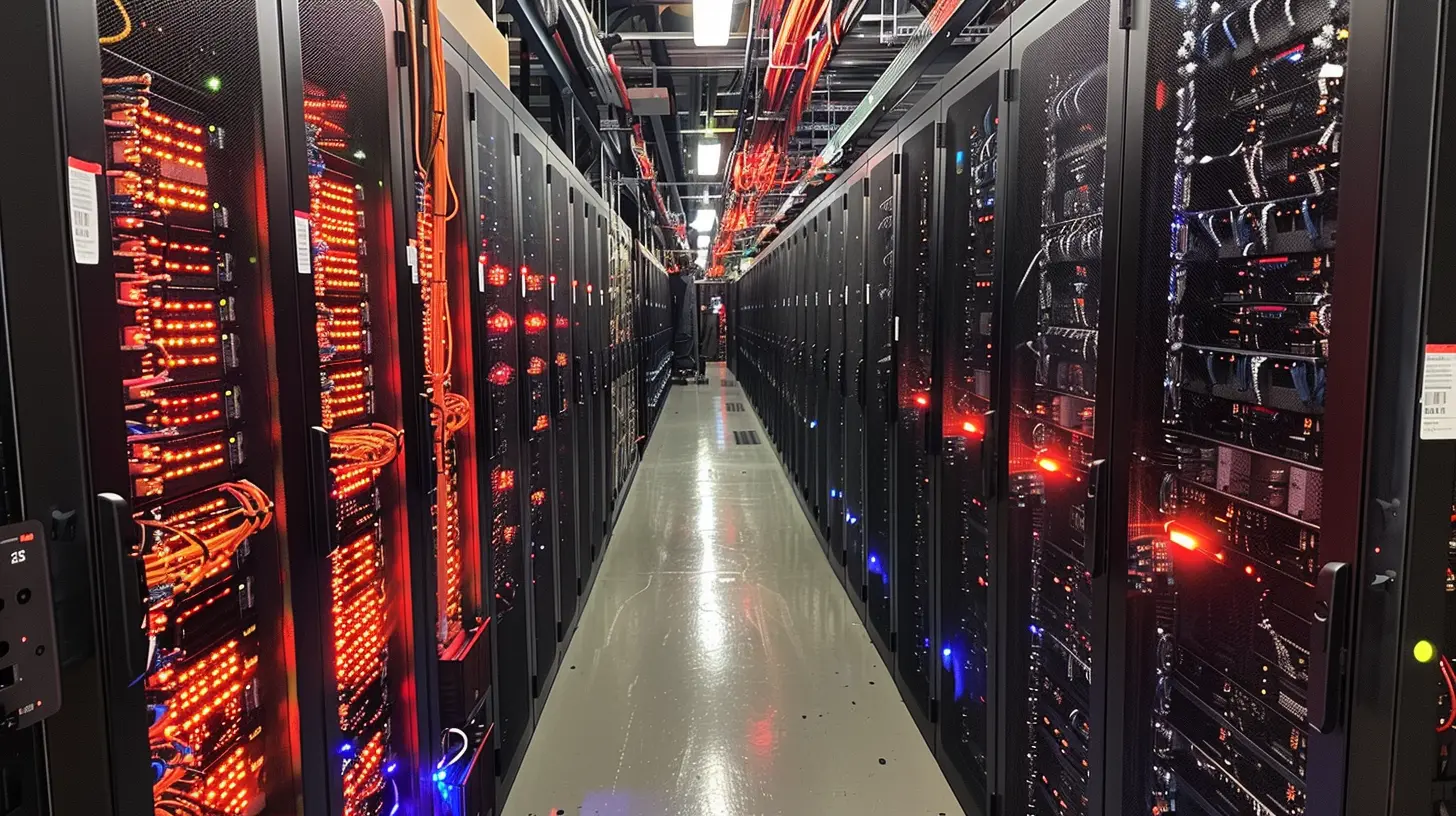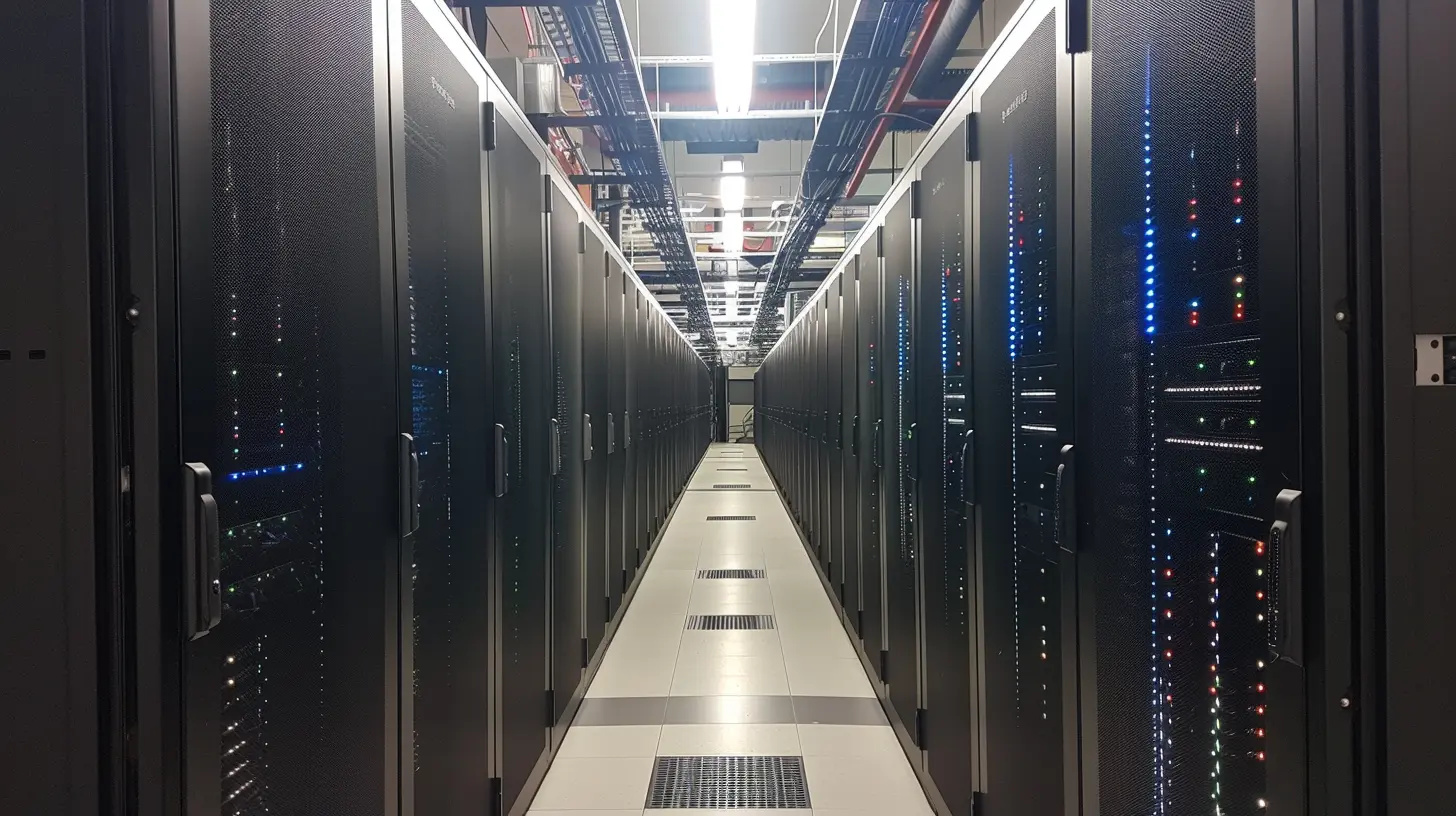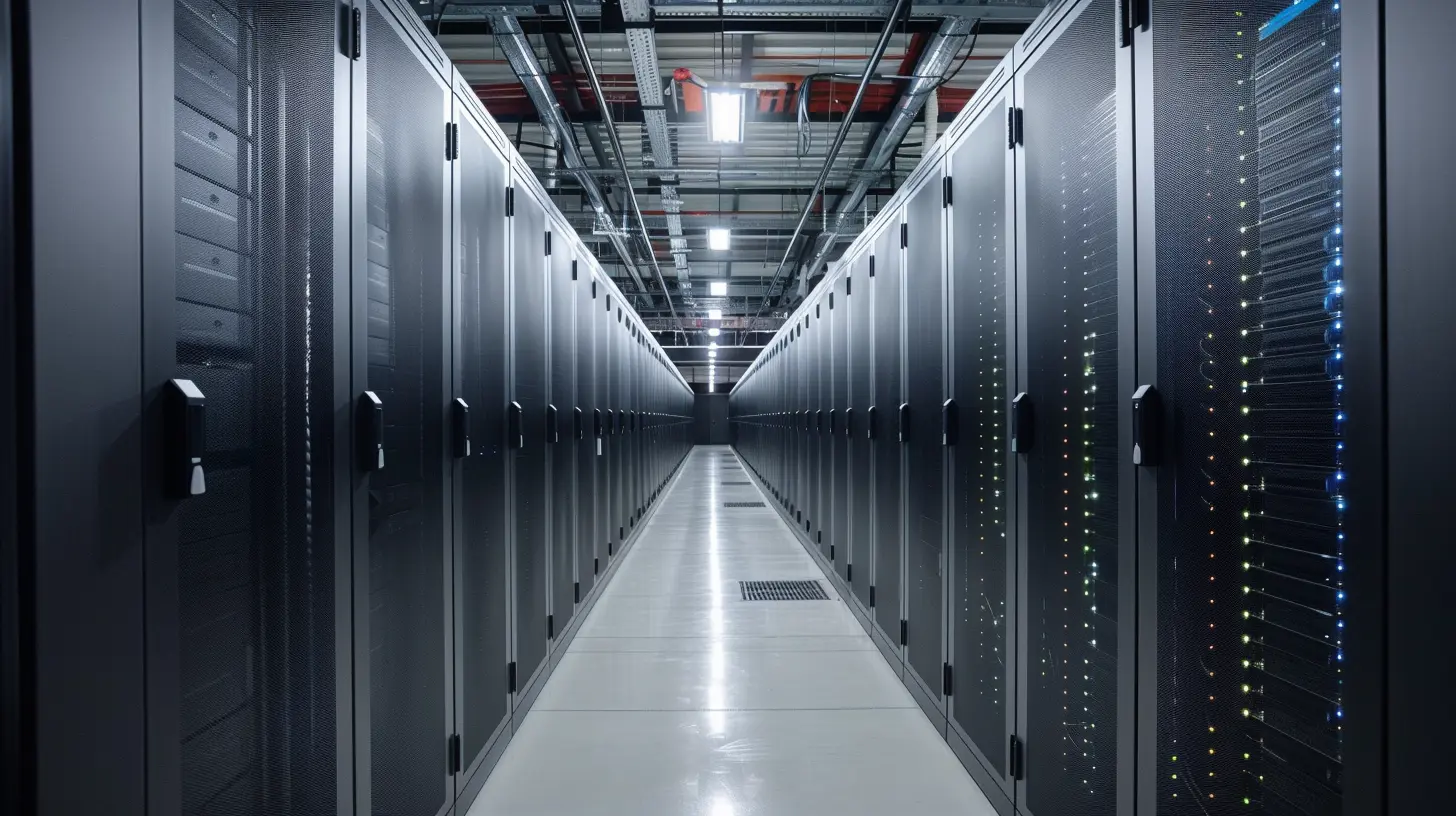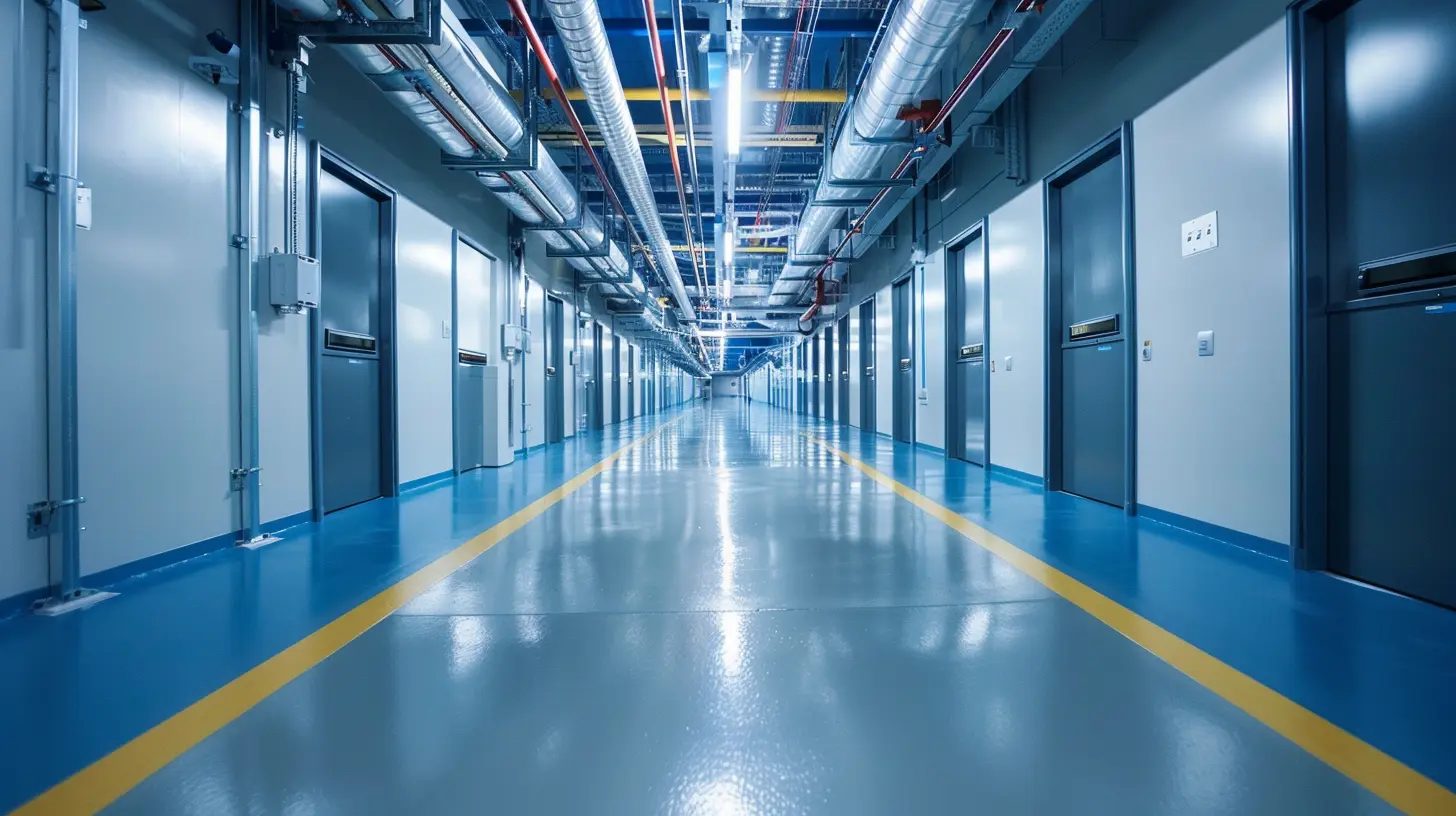The Role of Data Centers in the Growth of Streaming Services
22 June 2025
Streaming services have completely transformed the way we consume entertainment. From Netflix to Disney+, from YouTube to Twitch, streaming platforms have become the go-to for millions around the world looking to watch their favorite movies, shows, and live content. But have you ever stopped to wonder what powers these services behind the scenes? What keeps that video loading smoothly without any hiccups?
Enter data centers. These unsung heroes are the backbone of streaming services, ensuring that you can binge-watch your favorite series without interruptions. But let's break it down and dive deeper into how data centers are playing a crucial role in the explosive growth of streaming services.

What Exactly is a Data Center?
Before we jump into the nitty-gritty of how data centers support streaming, let's first understand what a data center actually is. In the simplest terms, a data center is a facility composed of networked computers and storage systems that businesses and other organizations use to organize, process, store, and disseminate large amounts of data.Think of a data center as the brain of the internet. Every time you stream a video, listen to a song, or even send an email, that data is being processed and delivered through a data center somewhere in the world. These facilities are massive, often the size of multiple football fields, and are packed with servers humming away day and night.
Now, let’s connect the dots between data centers and streaming.

Why Streaming Needs Data Centers
Streaming content isn’t as simple as just hitting play. The video or audio file you’re accessing is typically housed in a cloud, which is essentially a collection of data centers spread across the globe. When you press play, the data must travel from the cloud to your device, passing through various networks and servers before it reaches you. All of this happens in milliseconds, thanks to—yep, you guessed it—data centers.Without data centers, streaming services simply wouldn’t be able to exist at the scale they do today. Here’s why:
1. Storage Capacity
Streaming services need to store an insane amount of data. Think about it: Netflix alone hosts thousands of movies and TV shows at various levels of quality, from standard definition to 4K HDR. Then there’s audio streaming like Spotify, which has millions of songs on its platform.All of this data requires massive storage capacities, and it’s data centers that provide this. They’re like the giant closets where all of the digital content is kept, ready to be pulled out and delivered to your screen whenever you need it.
2. Bandwidth & Speed
Have you ever tried watching a video on a slow internet connection? It’s the absolute worst—buffering, pixelation, and waiting forever for the video to load. That’s where data centers help. They ensure that streaming services have access to high-speed bandwidth, which allows them to deliver content smoothly and in real-time.Data centers are strategically placed around the world, meaning that no matter where you are, there’s likely a data center relatively close to you. This proximity reduces latency (the delay in data transfer), ensuring that you get your content as quickly as possible. It’s like having a local pizza delivery place right around the corner—faster service, hotter pizza (or in this case, smoother streams).
3. Scalability
Streaming services are rapidly growing. It’s not just movies and TV shows anymore. We now have live streaming, gaming streams, and even interactive content. The demand for streaming services has skyrocketed, especially after the pandemic when more people turned to digital entertainment.Data centers play a significant role in allowing these services to scale up quickly. Think about it like this: Imagine your favorite streaming platform suddenly exploding in popularity. Without the infrastructure of data centers, the platform would crash under the pressure of millions of new users trying to stream content at the same time. Data centers allow these companies to add more servers and storage as needed to handle increased traffic, ensuring uninterrupted service for everyone.
4. Security and Reliability
Data breaches are no joke. With millions of users handing over their payment information and personal data to platforms like Netflix, Hulu, and Amazon Prime, security is a top priority. Data centers are equipped with state-of-the-art security measures to protect this data.From firewalls to encryption, data centers shield sensitive information from cyberattacks. Plus, they offer redundancy. This means that even if one server fails, another one can pick up the slack, ensuring that your streaming experience isn’t interrupted by technical glitches.
5. Energy Efficiency and Sustainability
Streaming services need massive amounts of energy to run 24/7. Data centers, too, are power-hungry entities requiring air-conditioning systems to keep servers cool and operational. However, many streaming giants have recognized the importance of sustainability.Companies like Google and Amazon are investing in energy-efficient data centers powered by renewable energy sources. This not only helps reduce the environmental impact but also cuts down on operational costs, allowing streaming services to keep growing without leaving a massive carbon footprint.

The Rise of Edge Computing in Streaming
Now, let’s talk about something a bit more cutting-edge: edge computing. Traditional data centers are centralized, meaning they’re located in specific regions and serve a large number of users over wide distances. But with the rising demand for real-time streaming—think live sports events or gaming streams—latency has become a bigger issue.This is where edge computing comes into play. Edge computing refers to processing data closer to the user, either at smaller data centers or even at the edge of the network (hence the name). By moving servers closer to users, streaming services can reduce latency even further, providing a more seamless experience, especially during live broadcasts.
For instance, Twitch, a popular platform for live streaming, benefits tremendously from edge computing. With millions of gamers streaming their content live, any delay or lag would ruin the viewing experience. Edge computing minimizes this delay, ensuring that streams remain smooth and uninterrupted.

How Data Centers Are Shaping the Future of Streaming
As we move forward, the role of data centers in the streaming industry will only become more critical. Here’s a look at some emerging trends that we’re likely to see in the near future:1. 5G and Faster Streaming
With the global rollout of 5G, streaming is about to get even faster. 5G networks promise to deliver data speeds up to 100 times faster than 4G, which will revolutionize how we consume content. Data centers will need to keep pace with these advancements by upgrading their infrastructure to support higher speeds and lower latency.2. Virtual Reality (VR) and Augmented Reality (AR) Streaming
The future of entertainment might not just be on a flat screen. VR and AR technologies are gaining traction, and soon we might be streaming immersive 360-degree videos or even interacting with virtual environments in real-time. This will require even more powerful data centers to handle the increased data load and deliver these experiences without any lag.3. AI-Driven Content Delivery
Artificial Intelligence (AI) is also making its way into the world of streaming. AI algorithms can predict user preferences and pre-load content closer to the user’s location for faster delivery. This is where data centers will need to integrate AI-driven solutions to enhance the user experience further.4. Sustainability Initiatives
As we’ve mentioned earlier, data centers consume a lot of power. But there’s a growing push for more sustainable practices. Streaming giants are likely to invest in greener, more energy-efficient data centers in the coming years. This could include innovations like liquid cooling systems, solar-powered data centers, or even underwater data centers that use the ocean’s natural cooling properties.Conclusion
Data centers are the unsung heroes behind the booming success of streaming services. Without them, we wouldn’t have the seamless, on-demand entertainment experience we’ve come to expect. From storing vast amounts of content to ensuring fast and secure delivery, data centers form the backbone of the streaming world.As streaming continues to evolve with advancements like 5G, edge computing, and VR, data centers will remain at the forefront, adapting and scaling to meet the ever-growing demand. So the next time you sit down to binge-watch your favorite show, remember that there’s an army of servers working tirelessly behind the scenes to make it all possible.
all images in this post were generated using AI tools
Category:
Data CentersAuthor:

Gabriel Sullivan
Discussion
rate this article
2 comments
Tracie Kelly
Empowering entertainment through innovation!
November 12, 2025 at 3:59 AM
Matteo Allen
Data centers are crucial for streaming growth, ensuring reliability, speed, and scalability.
June 30, 2025 at 11:07 AM

Gabriel Sullivan
Absolutely! Data centers are foundational for streaming services, providing the necessary infrastructure for high performance, reliability, and scalability to meet increasing demand.


